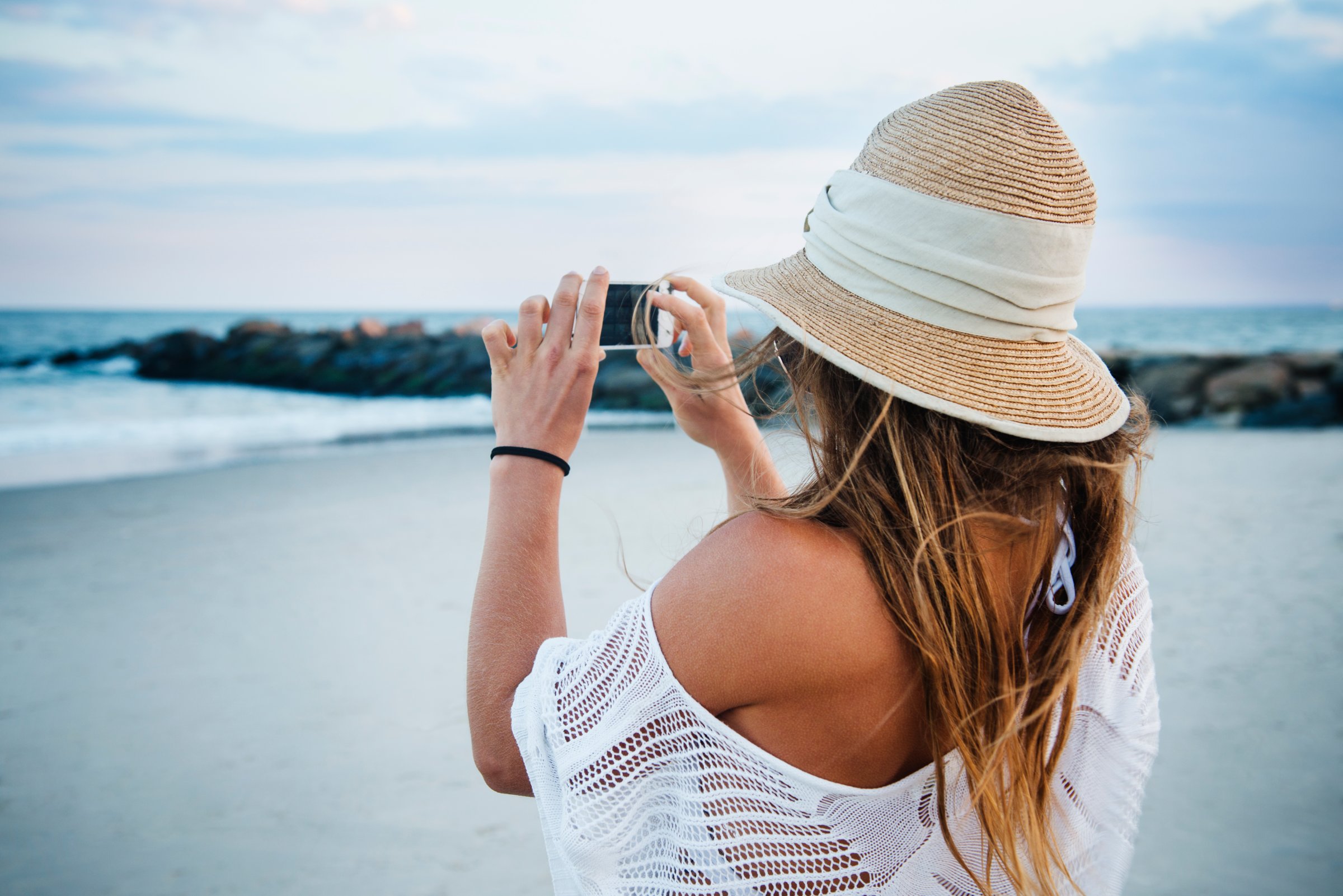
Some background: I recently crashed my family’s vacation to Atlantis Paradise Island Resort. Before I left, my mom sent a text reminding me to turn off my cellular data before the flight so I didn’t accidentally use it in the Bahamas, outside of our plan. I figured there would be Wi-Fi at the resort, but I figured wrong. There was a steep daily fee, and we chose not to pay it.
I did not panic. I did not mentally evaluate my monthly budget to determine if I would be willing to pay $12 a day to be able to constantly refresh my work email and send my boyfriend Pusheen emojis (the only important things I do on my phone). I allowed myself two minutes to pout internally about not being able to exploit my location for Instagram likes, but then I spent the next five days blissfully unaware of who was hanging out without me, the state of American politics, and most importantly, hundreds and hundreds of incoming emails. It was just so nice.
I felt my mood lighten, with credit also due to the blue water and the perfect weather and quality time with people I love. When I did have my phone with me, it was only used as a very thin, very inadequate camera and occasionally as a bookmark.
If you are planning in advance to be more digitally disconnected on your next trip, here are seven simple ways to do a digital detox. Before logging off, make sure to set expectations with anyone you’re in frequent contact with — your friends, family, and coworkers. And if you come up with any tips for resurfacing, let me know.
1. Make a list of analog things you’d like to have time for.
I keep one in my Notes app for everyday reminders, but it works on vacation, too. When I travel, it includes reading, sketching, taking local yoga classes, and wandering around – somewhat aimlessly, somewhat on the lookout for ice cream shops.
These are all things that contribute to a relaxed mental state, which is the main goal of most vacations and the opposite of what phone time creates. Any time you find yourself beginning a mindless scroll, open up that list, pick something from it to do instead, and put the screen away.
Read More: How Much it Costs to Take an Epic 2,400-mile Road Trip on Route 66
2. Declutter your digital space.
It takes a lot of time to unsubscribe from emails you don’t care about, unfollow accounts that annoy you, and tailor your notification settings. The quickest way to have the same effect? Deleting the entire app. You know your problem apps; just uninstall them, even if it’s only during your trip or for a few days at a time. Turning your phone back into a phone is pretty liberating.
3. Turn off your push notifications.
You’ll be far less tempted to check in if there’s nothing new and exciting calling to you. Or, if you have an iPhone, filter your email using this brilliant hack.
4. Forget your charger on purpose.
Heading on a shorter trip like a day hike or a weekend at the lake with friends? Leave your charger behind. Limited battery life forces you to reevaluate what you use your device for. Keep it turned off or tucked away in airplane mode and you’re guaranteed to reach for it less often. Your phone may die, but you probably won’t.
Read More: 25 Trips of a Lifetime
5. Fake self-control with help from an app.
There are several apps on the market to help you track and limit your screen time, but I’ve found Moment to be the easiest to use. The Premium version (a one-time $3.99 upgrade) will allow you to set a daily time allowance, and if you go over, Moment can either send you a notification or kick you off entirely until the time period resets. On average, Premium users are able to shave off an hour per day from their phone usage time.
6. Try phone stacking when you’re with a group of people.
When you’re traveling with friends, family, or colleagues, it’s no longer uncommon for people to occasionally pull out their phones and check out of the group. The next time you’re all together — at dinner, perhaps, or any other place where the focus can naturally shift to each other — suggest that everyone places their phones in one stack, where they’ll stay for the entirety of the meal.
Depending on the group, you can have fun with it. Raise the stakes with rules: for example, the first one to reach for his or her phone has to buy a round of drinks.
7. Set specific check-in times.
Maybe you’re just fine without Facebook and Twitter, but it’s your work email inbox that’s causing your fingers to phantom scroll. If ignoring it is going to stress you out far more than taking a few minutes to check in, set aside a short time each day, but with a strict time limit. I’ve found 15 minutes is usually enough to gauge whether or not anything needs responding, and it’s smart for the time slot to fall either before the workday starts or after it ends, so you don’t find yourself stuck in an ongoing conversation.
This article originally appeared on TravelandLeisure.com
More Must-Reads from TIME
- Inside Elon Musk’s War on Washington
- Meet the 2025 Women of the Year
- The Harsh Truth About Disability Inclusion
- Why Do More Young Adults Have Cancer?
- Colman Domingo Leads With Radical Love
- How to Get Better at Doing Things Alone
- Cecily Strong on Goober the Clown
- Column: The Rise of America’s Broligarchy
Contact us at letters@time.com